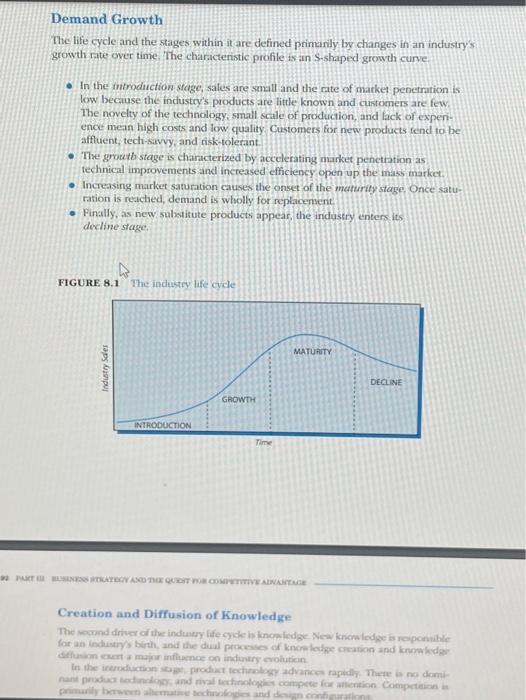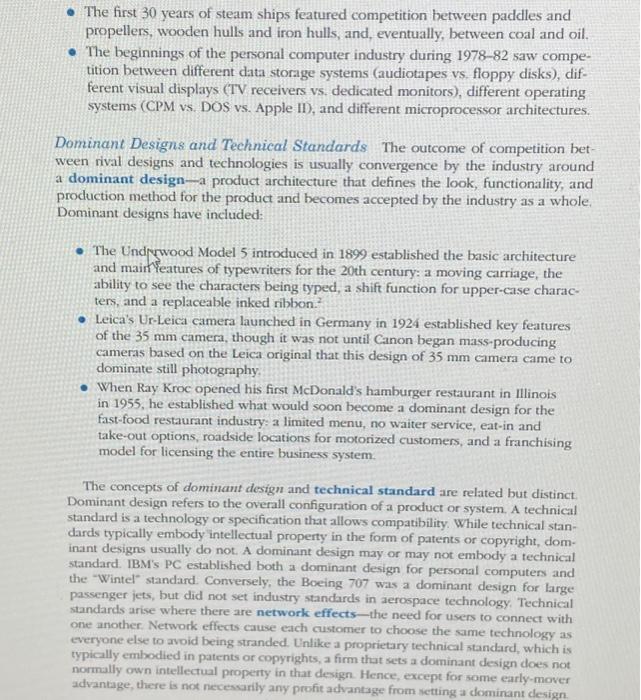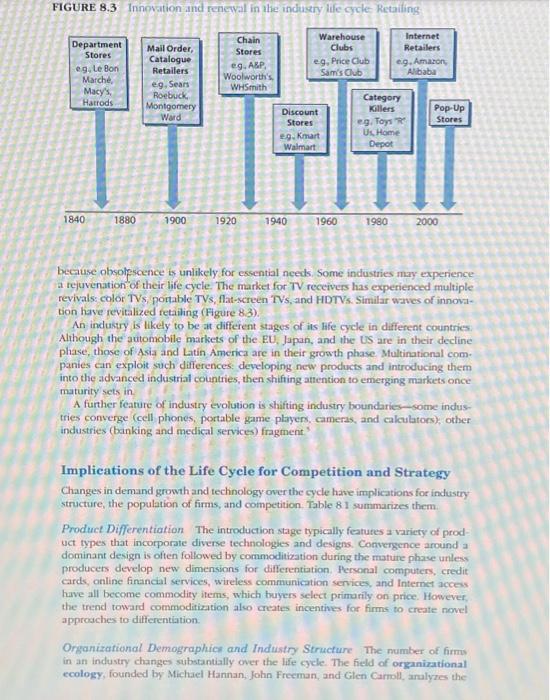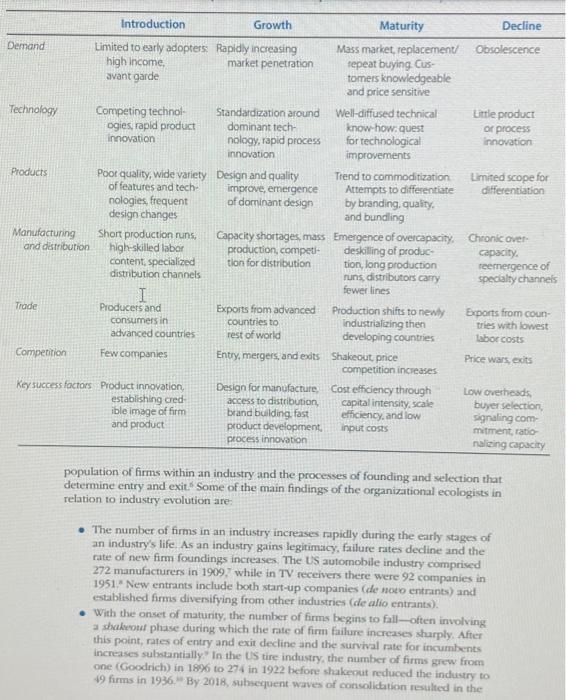please answer question 1 using the "Savanah bannana" baseball team as the example
and then use the following text to answer question two please and thank you
1 Select a persistently successful team in a professional sport win which you are familar. To what extont can the superior capabilities of this team be attnibut to the role of processes, motivation, and structuro (as discussod in the section "Dovoloping Organizational Capability")? 2. The examplos of Apple Computer and Genefal Motors (see 'Functional Structure" section above) point to the evolution of organzational structures over the industry life-cycle. During the growth phase, many companies adopt multidivisional structures, during maturity and decline, many companies revert to functional structures. Why might this be? (Note you may wish to refer to Chapter 8 , Which outlines the man features of the life-cycle model) Demand Growth The life cycle and the stages within it are defined primirily by changes in an industry's growth rite over time. The charactenstic profile is an S-shaped growth curve. - In the inmodiction stage, sales are small and the rate of matket penetration is low bectuse the industry's products are little known and customers are few. The novelty of the technology, small scale of production, and lack of experience mean high costs and low quality Gustomers for new products tend to be affluent, tech-sivvy, and risk-tolerant - The groutb stage is characterized by accelerating market penctration as technical improvements and increased efficiency open up the mass market. - Increasing market saturation causes the onset of the maturity stage. Once saturation is reached, demand is wholly for replacement. - Finally, as new substitute products appear, the indastry enters its decline stage. FIGURE 8,1 The industry life cycle Creation and Diffusion of Knowledge The monnd driver of the indunery life gycke is know ledge. New knowledge is repponihle The first 30 years of steam ships featured competition between paddles and propellers, wooden hulls and iron hulls, and, eventually, between coal and oil. - The beginnings of the personal computer industry during 1978-82 saw competition between different data storage systems (audiotapes vs. floppy disks), different visual displays (TV receivers vs, dedicated monitors), different operating systems (CPM vs. DOS vs. Apple II), and different microprocessor architectures. Dominant Designs and Technical Standards The outcome of competition between rival designs and technologies is usually convergence by the industry around a dominant design - a product architecture that defines the look, functionality, and production method for the product and becomes accepted by the industry as a whole. Dominant designs have included: - The Undywood Model 5 introduced in 1899 established the basic architecture and mairf features of typewriters for the 20th century: a moving carriage, the ability to see the characters being typed, a shift function for upper-case characters, and a replaceable inked ribbon. - Leica's Ur-Leica camera launched in Germany in 1924 established key features of the 35mm camera, though it was not until Canon began mass-producing cameras based on the Leica original that this design of 35mm camera came to dominate still photography. - When Ray Kroc opened his first McDonald's hamburger restaurant in Illinois in 1955, he established what would soon become a dominant design for the fast-food restaurant industry: a limited menu, no waiter service, eat-in and take-out options, roadside locations for motorized customers, and a franchising model for licensing the entire business system. The concepts of dominant design and technical standard are related but distinct Dominant design refers to the overall configuration of a product or system. A technical standard is a technology or specification that allows compatibility. While technical standards typically embody intellectual property in the form of patents or copyright, dominant designs usually do not. A dominant design may or may not embody a technical standard. IBM's PC established both a dominant design for personal computers and the "Wintel" standard. Conversely, the Boeing 707 was a dominant design for large passenger jets, but did not set industry standards in aerospace technology. Technical standards arise where there are network effects - the need for users to connect with one another. Network effects cause each customer to choose the same technology as everyone else to avoid being stranded. Unlike a proprietary technical standard, which is typically embodied in patents or copyrights, a firm that sets a dominant design does not normally own intellectual propenty in that design. Hence, except for some early-mover advantage, there is not necessarily any profit advantage from setting a dominant design. because obsolescence is unlikely for essential needs. Some industries may experience a rejuvenation of their life cycle. The market for TV receivers has experienced multiple revivals: color TVs, poitable TVs, flat-screen TVs, and HDTVs. Similar waves of innovation have revitalized fetailing (Figure 8.3). An induky is likely to be at different stages of is life cycle in different countries Although the automobile markets of the EU, Jupan, and the US are in their decline phase, those of Asia and Latin America are in their growth phase Mtultinational com. panies can exploit such differences: developing new products and introducing them into the advanced industrial countries, then shifting attention to emerging markets once maturity sets in A further fearure of industry evolution is shifting industry boundaries-some industries converge (cell phones, portable game players, cameras, and caleulators); other industries (banking and medical services) fragment. Implications of the Life Cycle for Competition and Strategy Changes in demand growth and technology over the cycle have implications for industry structure, the population of firms, and competition. Table 81 summarizes them. Product Differentiation The introduction stage typically featutes a variety of prod: uct types that incorporate diverse technologies and designs. Convergence around a dominant design is often followed by commoditization during the mature phase unless producers develop new dimensions for differentiation. Personal computers, credit cards, online financial services, wireless communication services, and Internet access have all become commodity items, which buyers select primarily on price. However. the trend toward commoditization alwo creates incentives for firms to create novel approuches to differentiation. Organizational Demagraphics and Industry Structure The number of firms in an industry changes substantially over the life cycke. The field of organizational ecology, founded by Michael Hannan, fohn Freeman, and Glen Carmll aralvzes the population of firms within an industry and the processes of founding and selection that determine entry and exit. Some of the main findings of the organizational ecologists in relation to industry evolution are- - The number of firms in an inclustry increases rapidly during the early stages of an industry's life. As an industry gains legitimacy, failure rates decline and the rate of new firm foundings increases. The US autornobile industry comprised 272 manufacturess in 1909,? while in TV receivers there were 92 companies in 1951." New entrants include both start-up companies (de noto entrants) and established firms diversifying from other industries (de alio entrants). - With the onset of maturity, the number of firms begins to fall-often involving a shakeout phase during which the rate of firm failure increases sharply. After this point, rates of entry and exit decline and the survival rate for incumbents increases substantially? In the US tire industry, the number of firms grew from one (Goodrich) in 18%6 to 274 in 1922 before shakeout reduced the industry to 49 firms in 1936 " By 2018 , subequent waves of consolidation resulted in the











